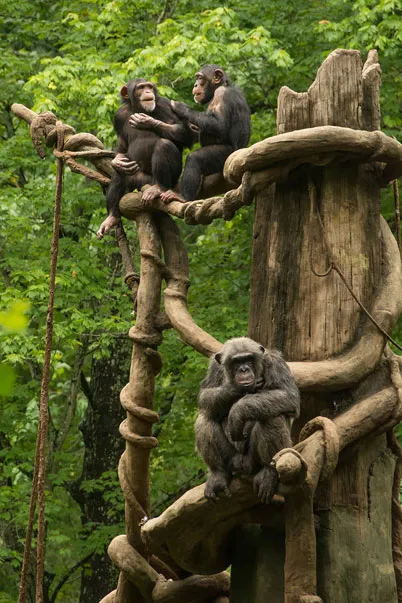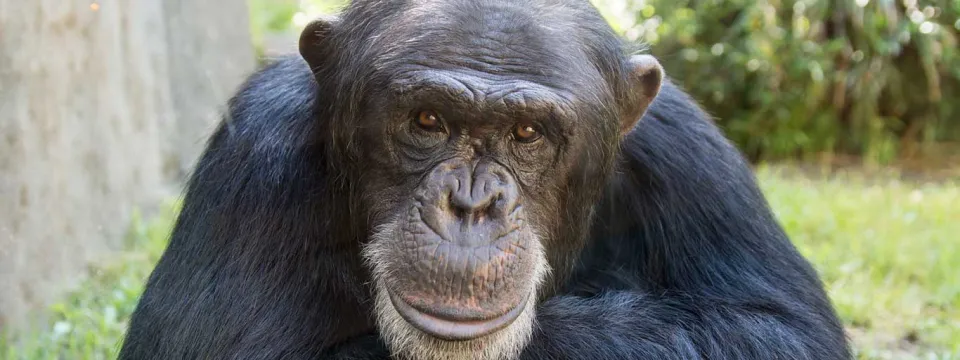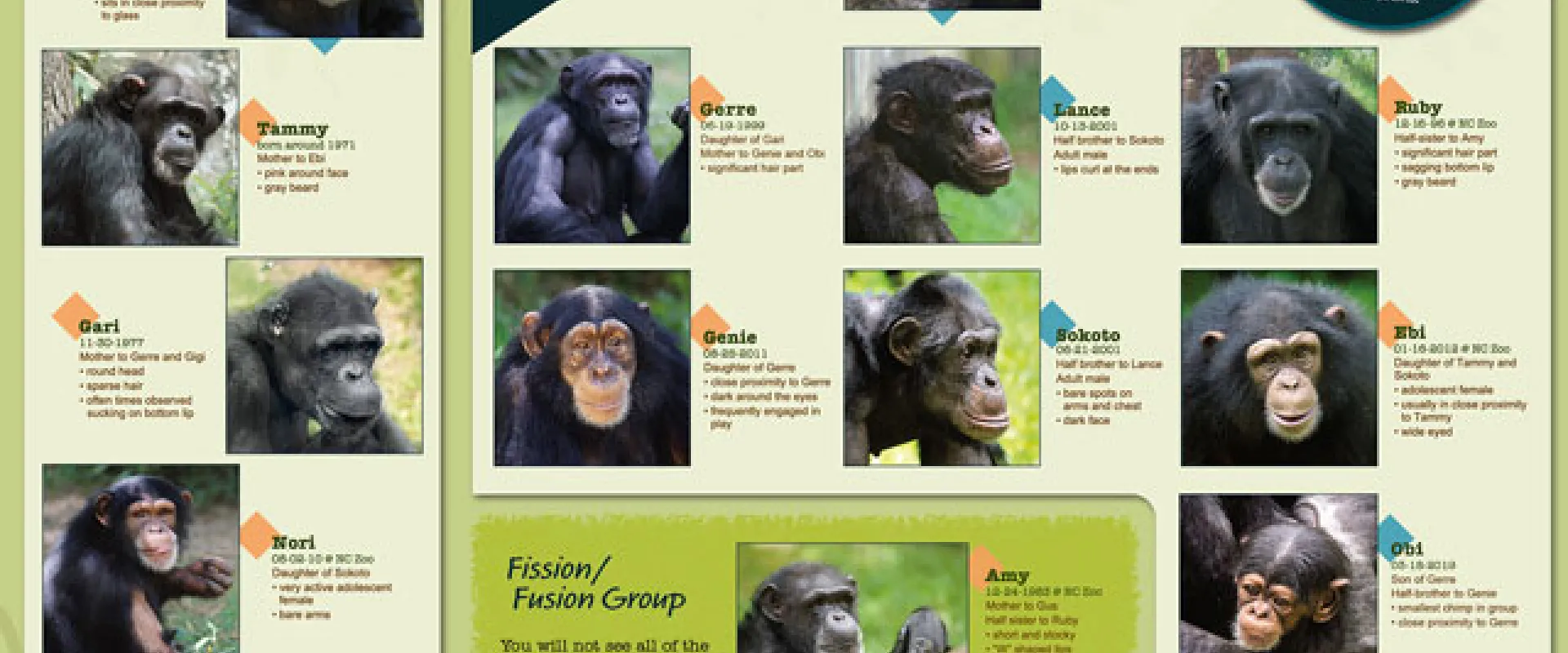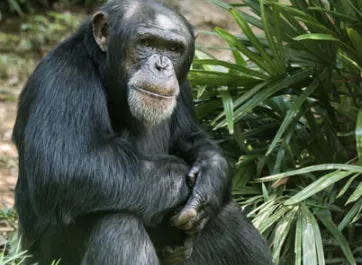Written by Jennifer Ireland, Curator of Mammals, North Carolina Zoo
The North Carolina Zoo is recognized as a leader in chimpanzee management in the zoo community. We house one of the largest number of chimpanzees in Association of Zoos and Aquariums (AZA) and was one of the first to pioneer the use of fission-fusion social management.
In the wild, chimpanzees have a fission-fusion social structure. This means that they will socialize with different members of its troop at varying times. Small groups and individuals in a chimpanzee troop come together to form larger groups (fusion) and larger groups break apart into smaller groups/individuals (fission). These frequently changing social groupings can be all male, all female or a varied mix of males and females with group sizes ranging from 1 to over 100.
Historically, chimpanzees in zoos have been maintained as one troop. Often these troops were small, consisting of one male and a few females. This made sense at the time. Frankly, it was easier. Chimpanzees are quite political and, in establishing and maintaining dominance, can be very aggressive. Introducing new chimpanzees to each other can be time consuming and difficult. If you’ve got a nice stable group of chimpanzees, why rock the boat?
Simply put, we wanted and needed to do better.

Chimps at the North Carolina Zoo
In order to better replicate the social structure of chimpanzees, zoos started moving towards housing larger troops that were multi-male and multi-female. However, with this move came problems. Sometimes, despite all our best efforts, there are chimpanzees who just can’t get along with each other. What do we do now?
Moving chimpanzees from zoo to zoo to try and solve social problems is expensive, stressful for the chimpanzee and care team and is not guaranteed to be successful. Not the best option. Now what?
In 2008 the North Carolina Zoo was faced with this very situation when Kendall, a young male, came to live here. Having been human-reared and trained to be a performer in the entertainment industry, Kendall had never lived with other chimpanzees, therefore never learned the social skills needed to be a chimpanzee. Despite all the hard work and best efforts of our animal care team, we were not able to integrate Kendall into our troop.

Picture above: Kendall
Because of Kendall’s lack of social skills, moving him to another zoo to be integrated into a different troop wasn’t likely to be successful either. So, our care team decided to work with what we knew about chimpanzees’ natural social structure and building off what successes we were having.
The solution was to have two groups of chimpanzees, one with Kendall at the center and the other with those not compatible with Kendall at the center. We identified individuals that were socially compatible with all chimpanzees in both core groups and moved them between the groups. A changing group composition with one group getting smaller while the other got larger. Fission-fusion social management. This proved very successful in getting Kendall socialized with many chimpanzees and provided varying social opportunities for the other chimps, just like they would get in the wild.

Our chimp troops
We’ve continued to employ fission-fusion social management over the past 12 years, moving individuals between Kendall’s group and another chimp group led by male Jonathan. This has been very beneficial as we’ve integrated other chimpanzees with social challenges in our groups and managed the medical and geriatric care of our chimpanzees. This fission-fusion social management replicates their natural social structure, maximizing social companions and interactions and improving the welfare of our chimpanzees.

